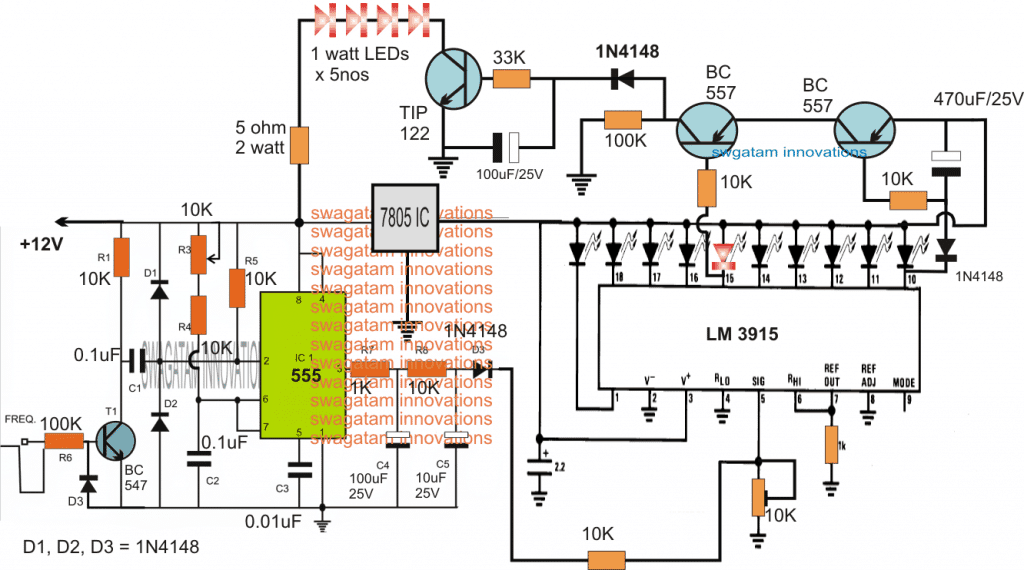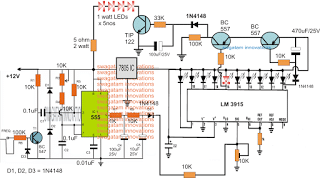In this post I have explained an innovative brake light circuit using speed detection of the vehicle which could be a motorcycle. The circuit implements an advanced brake light switch ON ensuring a much safer riding experience for the user. The idea was requested by Mr. Rayan.
Circuit Objectives and Requirements
- I have an idea, usually brake lights of a motorcycle light up only when brakes are applied. But usually the motorcycle speed is reduced by changing down the gears.. so can u make a circuit in such a way that the brake lights light up depending on the speed reduced in the engine, even though the brakes are applied or not.
- In motorcycle .. I wanna install a automatic headlight. Automatic headlight is one which lights wen the engine starts and gets off wen the engine has been made off.
- And also can you make circuit that has automatic dimmer dipper along with automatic headlights..!! And also in the same circuit. I should also have an charging point to charge a cell phone from the battery.
- And I want to make a circuit in which the gears changed in motorcycle should be shown on a screen..! Same as how the left indicator is turned on it shows that the indicator is been made on screen.
- Similarly when I change the gears it should also show me on which gear I'm running my motorcycle.

The Design
As shown in the above figure, the proposed brake light circuit using speed detection consists of two main stages, viz, the IC 555 tachometer circuit stage and the subsequent LM3915 IC dot mode LED driver circuit stage.
The tachometer circuit stage is configured as an integrator for processing the clock signals from the pick up device of the motorcycle.
The pickup coil translates the engine speed into correspondingly varying clock rate (Hz) which is applied at the base of the BC547 associated with the IC 555 circuit.
These clocks are processed and converted into a exponentially varying voltage across the RC network attached with pin#3 of the IC 555.
The above integrated output is fed to the sensing input of the indicated LM3915 LED dot mode driver stage.
The 10 LEDs connected across the output pins of the LM3915 respond to the exponentially rising and falling voltage levels from the IC 555 output and correspondingly produce a sequentially jumping logic lows across these LEDs, which light up in the identical sequence from left to right, and vice versa.
Since the IC is configured in the dot mode, only one LED lights up at a time while shutting off the preceding ones as the sequence progresses or dances along the line.
This up/down movement of the LEDs represent the speed of the vehicle (or the gear level) and this outcome is exploited by the couple of transistors for switching ON the brake lights through speed detection.
How it Works
The idea here is to detect the speed and switch ON the brake lights only when the speed is detected to be slowing down relatively faster, and ignoring the slower transitions or the delayed changing of gears.
This is important to ensure that the brake lights do not light up on normal lower gear changes intended only to reduce speed, rather than to halt the vehicle at some nearing destination.
This is implemented by the smart use of the two pinouts (arbitrarily selected) and the two respective BC557 transistors attached with the relevant pinouts of the IC LM3915.
The preset at pin#5 of the IC is adjusted such that at relatively higher speeds and gear levels, the last LED in the sequence at pin#10 is switched ON (activated), which correspondingly switches ON the attached right side BC557 transistor.
During this time the left side BC557 shown connected at pin#15 is kept switched OFF (since only pin#10 is ON, rest are switched OFF), therefore the LED driver using the TIP122 is also held switched OFF, and consequently the brake lights are also shut off.
Now, in case the vehicle which could be a motorcycle is intended to be stopped by the rider, and therefore its speed reduced relatively quickly, results in the output of the LM3915 sequencing backwards proportionately and touching down at pin#15.
Since the above sequencing can be expected to happen at a quicker rate, the BC557 at pin#10 is held switched ON by its base RC network even while its base trigger has moved and sequenced across pin#15.
At this instant both the BC557 can be expected to be switched ON, and the LED driver along with the brake lights are also switched ON....the brake lights now light up brightly for some moment of time until the time pin#10 BC557 is able to retain its base capacitor charge level to the optimal switching point.
